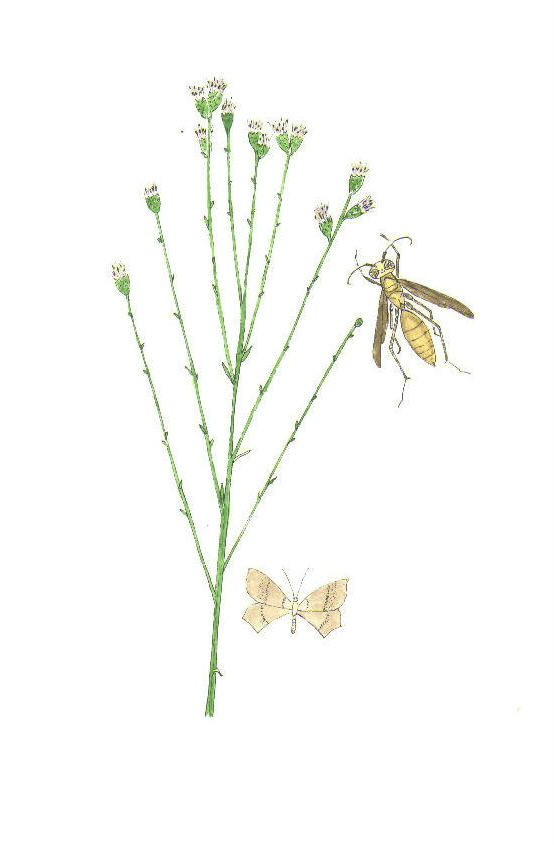Wednesday, Oct. 18, 2006
Vol. 9 No. 22
Desert Broom is Blooming! |
|
|
By Michael Plagens |
|
|
CASA GRANDE, Az. ----- The blooming period for Desert Broom (Baccharis sarothroides), a common to sometimes abundant desert shrub, is now under way. This is the last major biological event of the season in the desert flora and fauna community. What makes it so important is the abundance of nectar and pollen provided to the many insects that pollinate the flowers. These insects include butterflies, bees, flies, wasps, and beetles in great abundance. The insects rely heavily on this late season abundance in order to survive through to the next season. Some of these insects will estivate (rather like hibernation), while others will lay large clutches of eggs that pass the winter. A few of the butterfly species will even use the nectar as fuel for long distance migrations. The bees that rely on Desert Broom are vital for pollinating many other kinds of plants, some of which are rather scarce. Many of the wasps and flies are key predators and parasites that keep many plant-eating insects in check. Without the wasps many desert plants would succumb to the ravages of herbivores.
Desert Broom is common in fallow fields, in urban plantings, at road sides and along washes in the desert. In a few weeks the female shrubs will be topped with an abundance of fuzzy seeds that will float off with the breeze if they are not devoured first by wintering birds such as the White-crowned Sparrow. |

Desert Broom (Baccharis sarothroides) Common insects associated with this shrub include Paper Wasps (Polistes) and Inch-worm Moths (Geometridae). Watercolor image © by Mike Plagens. Sponsored Links: |
 Previous Issue |
 Next Issue |
Back to Sonoran Desert Naturalist Home Page
Flora
and Fauna News appears several times
per month and provides current information about the birds, insects and plants
(natural history) living in the Arizona Sonoran Desert.
Copyright Michael J. Plagens, 2008
Send questions or comments to mjplagens@arizonensis.org